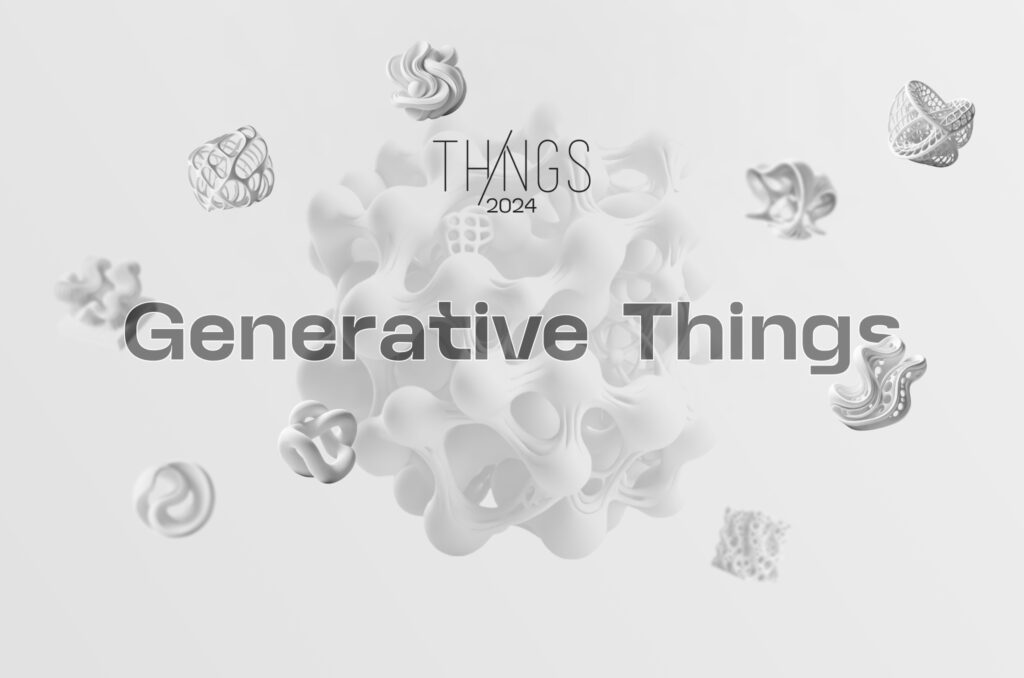A decade of new “Generative Things”
Back in 2014, when ThingsCon started, the digital world was deeply engaged in social tools that built business models on the idea of a networked society, once thought to be a democratizing force. With the introduction of the 7th generation iPhone and the increasing connection between the physical and online worlds, the Internet of Things (IoT) gained momentum, and a new form of hardware appeared. Cities were expected to become smart, and real-world data began influencing the online world for the first time, challenging new realities and giving rise to the concept of Connected Everywhere. ThingsCon aimed to create a space for designers and makers of this new physical space and objects, gathering curious individuals in Berlin and Amsterdam (and beyond) to explore and discuss. Initially, the manifestations were primarily gadgets for a select few or one-off provocations for critical thinking. However, as the so-called “Connected Everyday” became a reality, smart devices responding to behavioral data and interesting new products and categories slowly emerged. Along with these developments, the problems of the connected world also became apparent, leading ThingsCon to focus on Responsible IoT and the importance of trust in a world driven by potentially buggy technology and the threat of surveillance capitalism.
In recent years, with the “ChatGPT-moment” in November 2022, AI has become the dominant technology of new developments, and is more and more accessible to everyone. While machine intelligence and artificial intelligence have been a focus of academic research and innovation labs for years, the low barriers to use, vast amounts of data, and new generative technology have created experiences and services that make AI a part of our daily lives.
The past decade has also seen significant shifts in how digital technology has integrated into our daily lives. Mobile technology initially enhanced our lives but gradually started dominating them. Our main expressions of humanity became mediated through our digital presence, from shopping and relationships to meetings, work, and entertainment. Accelerated by the COVID-19 pandemic, even the least tech-savvy individuals now rely on digital tools as their go-to solutions. As AI rapidly extends our digital reality, it is crucial to understand and find new agency for human life in this context. ThingsCon’s focus on (un)intended consequences in the 2023 conference emphasized the need to be aware of the impact of new technology, particularly as it enters physical space, and to take responsibility for the behaviors it enables. In this rapidly evolving landscape, ThingsCon aims to explore the nature of reality itself this year.

Future things as Generative Things
So, the digital twin of our physical reality has been silently established in the past decade, not by (local) governments, but by third-party ‘social’ services. Generative AI is now added as a companion for creating, decision-making, and making, and it will be integrated as part of our digital identity. The connections between the digital twin and our physical reality are still loosely coupled. We have already seen the first steps in coupling the “AI twin” and physical reality this year. Weak signals, such as devices like Rabbit and Humane, that attempt to bridge these worlds are emerging. While these promises may not deliver fully as expected, the conceptual direction is clear, and an acceleration is expected this year or hints of that future in the coming years. Meta’s Rayban shades are maybe the most evolved iteration of adding AI to mundane objects.
The inspiration for this year’s conference is the coupling of the new artificial intelligence happening in digital lives to the physical world, the objects we use, and the places we live. It is as if an invisible but present gas undergoes a direct transition to a physical state, with the air becoming solid and the deposition of things from the twin intelligence. This raises questions about what this means for makers and designers of these things, how ethics will play out, and what new models of use and trust will emerge.
In other words, we are driven this year by our curiosity about what these new generative things will look like and how they will behave and play a role in our lives. We invite our speakers and workshop hosts to share their visions on this emerging reality. And we are curating a special exhibition of the near future “Generative Things”.
Sub themes/
questions to explore
We already have ideas for more specific subthemes and will flesh these out in more detail later. We invite you to reach out if you are inspired and would like to contribute!
Learn: Responsibility of Education: From when and how should designers learn about (responsible) generative technology
Create: Responsibility of Creators / Artists / Designers: Generative Things Exhibition
Control: Responsibility of Policy makers: Public spaces / Generative missers
Exploit: Responsibility of Business /Startups: Digital Solutions / Business models / copyright etc.
- What hidden systems are beyond AI, and how will they drive/influence generative things?
- What if AI becomes Sneaky AI as part of the things we use?
- AI is not a tech interface but part of the human system; a co-performance. How will we understand the intentions of these new co-performing generative things?
- How to design for transparency, understandability, scrutiny, and contestability with things?
- How much of new things do we accept? How to deal with “e-waste”, what are the new supply chains? Can we create regenerative things?
More to follow!
